The summer heat is already here. The hot temperature makes us irritable and sweaty. During these times, proper ventilation is needed, most especially in an enclosed space like our cars.
Good thing cars have an air-conditioning system that allows us to have cool and comfortable rides. But sometimes, you might notice that the air-conditioning is not properly distributed in the car.
This will not only make the ride uncomfortable for other passengers, but it can also mean that there is something wrong with the air-conditioning system of the car. Which is why Philkotse.com prepared tips to ensure that the air-conditioning system in the car is well distributed.
1. Ways to ensure the AC is well distributed in the car
If you notice that the cooling system of your car is not evenly distributed, do the following:
Make sure that the air filters are clean and is working properly. Clean the air filters properly. And if it’s been a while since the last time you replaced them, you can install new filters or have someone else install new filters.
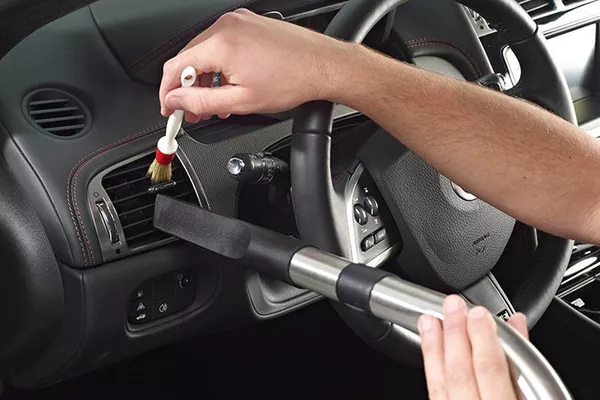
Check and clean the car's air conditioning regularly
If the problem persists even after cleaning and replacing the air filters, there might be problems in the components of your car’s AC system. If this is the case, call an HVAC specialist to have it fixed.
Have an annual air-conditioning service. This will ensure all the components of the car will be checked and serviced. All the parts of the car’s air-conditioning system are subject to wear and tear that needed regular servicing.
Yearly AC system servicing ensures that all of the components are functioning and working properly. It will also prevent AC malfunctions.
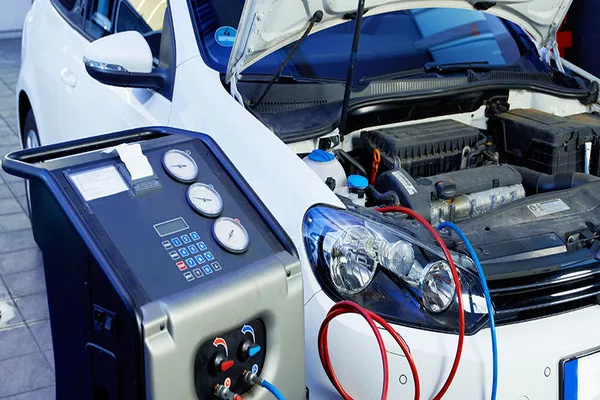
Yearly AC system servicing ensures that all of the components are functioning and working properly
When you have your AC system checked, make sure the mechanic inspects the refrigerant levels.
Maintain and use your car’s AC system properly. There are instances that the misuse of the car’s AC system is the main reason why it is not evenly distributed or malfunctioning.

The misuse of the car’s AC system is the main reason why it is not evenly distributed or malfunctioning
2. Understand parts of the car’s AC system
Cars are found to primarily have 3 different types of air conditioning system. Although there are different types, the design and concept are very similar to one another. Here are the most common components of a vehicle's air-conditioning system:
Compressor
The compressor is referred to as the heart of the car’s air-conditioning system. It is a pump that is belt-driven fastened to the engine. The compressor is responsible for compressing and transferring the refrigerant gas.
The air-conditioning system is divided into 2 sides – the low-pressure side and the high-pressure side. The two-pressure side is also defined as the suction and discharge. Basically, the compressor is a pump that has an intake and discharges side.
The suction or intake side draws the refrigerant gas in, from the evaporator outlet. In other cases, it is done via the accumulator.
The refrigerant, once drawn into the intake side, will be compressed and delivered to the condenser, where it can transfer the heat absorbed from the inside of the car.
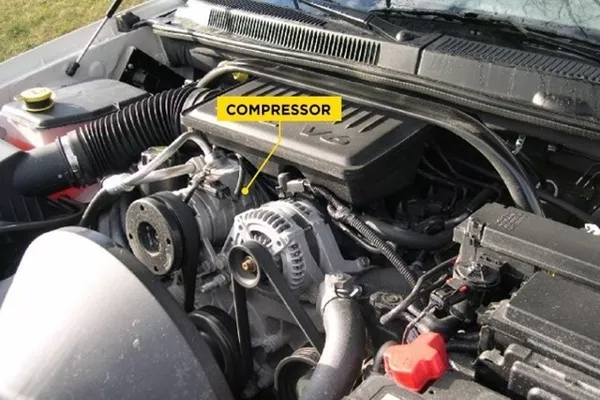
The compressor is a pump that is belt-driven fastened to the engine
Condenser
In the condenser, the heat dissipation happens. It looks quite similar to the radiator of your car. It is designed to radiate heat. It is commonly placed in the front of the radiator.
However, locations may differ because of the aerodynamic improvements in the car’s body. In the condenser, the gas will be converted into a liquid as the heat is removed from it.
>>> Read more: Automobile air conditioning system: Basic cleaning tips for Pinoy drivers.
Evaporator
The evaporator is located inside the car. It is the absorber of heat and provides various functions. Its main purpose is to remove heat from the cabin of the car. The second benefit is dehumidification.
It is the component of the car’s air-conditioning system which is responsible for fulling the refrigerant into the vacuum. This is where the gas becomes cold.

During these times, proper ventilation is needed, most especially in an enclosed space like our cars
Pressure Regulating Device
Pressure regulators control the temperature of the evaporator.
Orifice Tube
This pressure regulating device has a cone-like shape fixed orifice which provides restraint in the refrigerant flow. The restriction causes the refrigerant to shift from high-pressure liquid to low-pressure liquid refrigerant vapor before entering the evaporator.
Thermal Expansion Valve
This expansion valve is another pressure regulating device which also provides a limit in the refrigerant flow. The restriction will cause the refrigerant to shift from high-pressure liquid refrigerant to low-pressure refrigerant vapor before entering the evaporator.
The thermal expansion valve does not only sense pressure but also temperature. It is a very efficient regulator when it comes to regulating refrigerant flow to the evaporator.
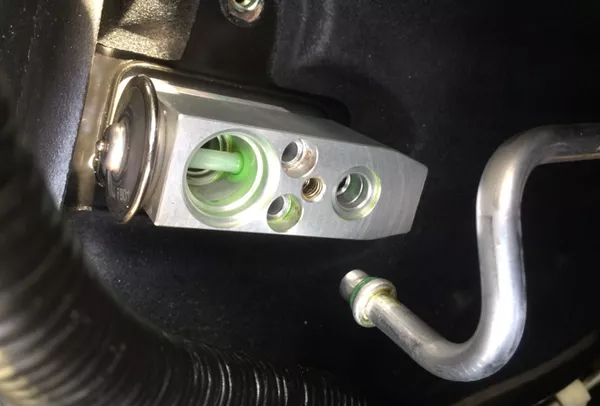
This expansion valve is another pressure regulating device which also provides a limit in the refrigerant flow
Receiver-Drier
This component is a canister that has desiccant inside which absorbs moisture. It is used on the high side of the system that also uses a thermal expansion valve. In making sure the valve acquires liquid refrigerant, the receiver-drier is used.
A sight glass is often attached at the top, and it is used in charging the system. This component is very important because if there is any moisture present in the system, it will cause havoc. Ice crystals will be formed and will cause blockages and mechanical damages.
>>> Also check: 4 most common car air conditioning problems & How to fix them.
Accumulator
The accumulator serves as the holding tank of the refrigerant that exits from the evaporator. The accumulator desiccant bag will remove any presence of moisture while the refrigerant is circulating inside.
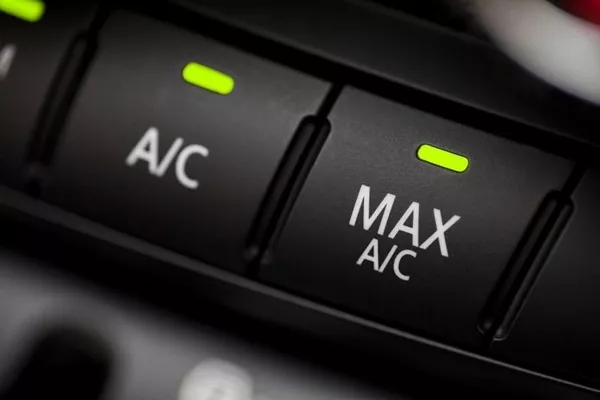
Good thing cars have an air-conditioning system that allows us to have cool and comfortable rides
The main role of the accumulator is to keep the compressor away from any liquid refrigerant that can damage it. The accumulators, also remove moisture and debris in the system just like the purpose of receiver-drier.
It is best to have the accumulator checked, repaired and replaced every time the system is under repair or when moisture and debris are concerned.
3. Importance of maintaining a well-distributed AC in the car
It’s important to make sure that the air-conditioning system in the car is well-distributed not only because it will provide equal distribution of cool air, but also because it increases energy efficiency.
It also enhances the overall performance of the AC system of your car. Balancing the distribution of air-conditioning in the car is the most important step to take in ensuring that the AC system produces comfort and operates efficiently.
Looking for more relevant information? Visit our car tips and advice.
Recent posts
- 8 steps to eliminate odor from your car aircon system Aug 17, 2022
- Must-know tips for every Filipino driver to do a proper car aircon cleaning Apr 17, 2020
- 4 Hacks on How to Find Car Air Conditioner Leaks Jul 19, 2018
- Car air-conditioning can cause cancer if not used properly Jun 29, 2018
- Should you shut off the A/C before turning off your car’s engine? Aug 04, 2020












